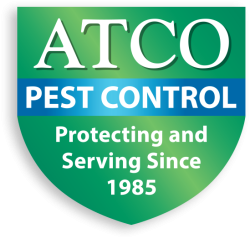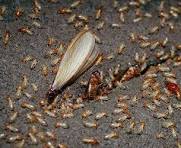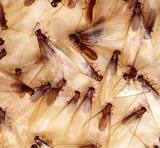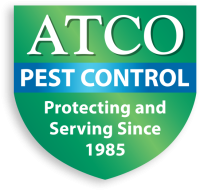Beware of Termites!
Termite Trouble in the Bay Area: How Moisture and Swarming Reveal What’s Really Going On
Ever seen a sudden burst of flying bugs by your porch light? Or found a pile of tiny wings near your windowsill? It’s not random—it’s termites. And they might be trying to move in.
If you live in the Bay Area, you’re in prime termite territory. But here’s the good news: once you understand what attracts termites—especially moisture—and how and why they swarm, you can stop the damage before it starts.
Why Termites Love Water: The Science Behind the Infestation
Here’s something every homeowner should know: excess moisture is an open invitation to termites.
Let’s break it down:
- Subterranean termites rely on contact with moist soil. Their soft bodies lose water easily, and damp wood makes for easier chewing.
- Drywood termites don’t need soil but are still drawn to high humidity areas.
- Decay fungi, which often attract termites, thrive when wood stays above 20% moisture content—particularly above 28%, where fungal decay kicks into overdrive.
- Wood-boring beetles (like Anobiids) also prefer high-moisture wood.
If your crawl space, attic, siding, or foundation traps moisture, you’re rolling out the red carpet for a colony.
What Swarming Termites Really Mean
When termites swarm, it’s their version of house hunting—and mating season.
These winged bugs are called alates. They leave the nest to start new colonies. While the swarmers themselves don’t cause damage, seeing them is a major red flag that you already have a mature colony nearby—or even inside your home.
Local Swarm Schedules
- Western Subterranean Termites swarm during the day after rain, usually in autumn through spring.
- Drywood Termites swarm late summer through fall (peak: September–October).
- Dampwood Termites go airborne around sunset from August through October, especially along the coast.
So, if you spot a flying termite—or their signature shed wings—especially during these windows, it’s time to act.
Key Termite Entry Zones: Moisture + Wood = Risk
Foundation & Crawl Spaces
This is termite HQ if moisture is present. Here’s how to keep it dry and pest-resistant:
- Gutters and Downspouts: Keep them clean. Channel water 5–10 feet away from your home.
- Proper Grading: Your yard should slope away from your foundation (6 inches over 10 feet is ideal).
- California Code Clearances:
- Siding: 6” above soil, 2” above concrete
- Framing: 8” above exposed soil
- Crawl spaces: Joists = 18”; Girders = 12”
If these clearances aren’t met, use treated or naturally durable wood.
- Vapor Barriers: Cover 80–90% of crawl space soil with 6-mil plastic to block evaporation.
- Ventilation: Ensure unobstructed vents and consider a dehumidifier if your area traps moisture.
Indoors
Moisture indoors feeds the same problems.
- Leaks: Fix plumbing or roofing issues immediately.
- Ventilation: Use exhaust fans in bathrooms, kitchens, and laundry rooms.
- Attic airflow: Soffit and ridge vents prevent ceiling condensation.
Landscaping
Plants and mulch can quietly fuel termite problems.
- Mulch: Keep it a few inches below siding and don’t pile it against wood.
- Plants: Keep shrubs at least 1 ft from your house to allow airflow.
- Sprinklers: Aim away from siding and foundations.
What to Do If You See a Swarm
It’s not the swarmers that hurt your house—it’s the workers they came from.
Here’s your game plan:
- Don’t panic, but act quickly.
- Collect samples or wings in a sealed bag and note the time/place.
- Call ATCO Pest Control for expert ID and inspection.
We’ll identify the species and assess your property for colony activity, water issues, and any damage that’s already underway.
Pressure-Treated Wood and Building Materials
If you’re building or remodeling:
- Use pressure-treated lumber or naturally resistant wood like foundation-grade redwood for anything near the ground.
- For siding close to soil, choose fiber cement, stucco, or other non-organic materials.
These choices can make a huge difference long-term.
How ATCO Helps Homeowners Stay Ahead
At ATCO Pest Control, we don’t just treat termites—we help prevent them from ever showing up. Our inspectors know the Bay Area’s climate, soil, and building types inside and out.
With every termite inspection, we:
- Identify hidden colonies
- Measure wood moisture content
- Check foundation clearances
- Spot mold, fungi, and early decay
- Recommend real fixes—not guesswork
Explore our full range of services from complete pest control to rodent programs and more.
Need service in your area? See our coverage list here.
Final Takeaway: Termites Love Moisture. Don’t Let Them Find It.
Termite prevention isn’t just pest control—it’s moisture control.
When water gets trapped in wood or soil near your foundation, it creates the perfect storm for subterranean and drywood termites. Combine that with a surprise swarm and you’ve got a clear warning: action is needed.
ATCO Pest Control is ready to inspect, assess, and protect your Bay Area home.






